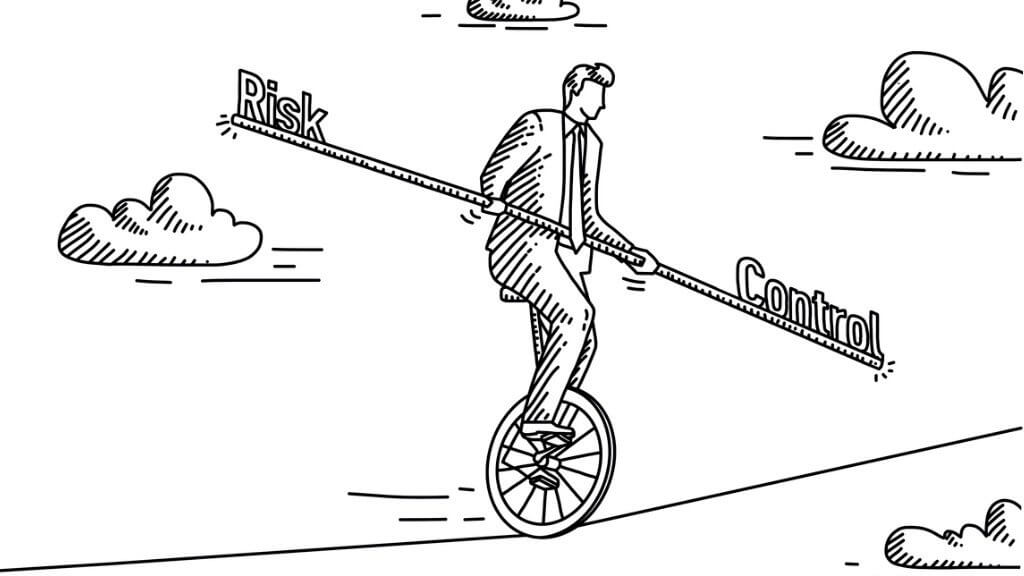Agility In Leadership – Leveraging The Unexpected For Business Growth

In today’s rapidly changing world, businesses face constant disruptions and challenges; be it a general election, global pandemic, civil unrest, volatile economies or unfounded technological development.
In the latest Allianz Risk Barometer – a survey of over 3,000 businesses and risk professionals – the top three organisational concerns were cyber incidents, business interruption (such as supply chain interruptions), and natural catastrophes. Businesses can prepare for the direct and indirect effects of these eventualities to some extent, but there is no way to stop them completely.
While these events may negatively affect some businesses, they can have the opposite effect on others, leading to unprecedented growth and demand that some may not be able to handle. Adopting an agile mindset can help a company not just survive times of change but thrive and leverage this as an opportunity for growth.
How to be agile and develop a growth mindset
A recent McKinsey Global Survey of 2,190 respondents investigated agility in business, asking respondents what, if anything, their companies did to advance this capability, and what was the impact to the business in hard numbers.
The study found four critical factors for driving agility successfully:
- Check the team at the top understands what agility is to ensure they can lead the change.
- Whether you implement agility in waves, in localised teams or all in one, the key is to ensure the effort and approach is intentional and directed.
- Adopting agility involves rewiring the entire organisation (including strategy, structure, process, people, and tech) to ensure it can support it in practise.
- Slow implementation of agility can hinder chances of success; aim to complete the main phase of your transformation within 18 months to keep the momentum going.
In short, for agility to truly empower growth, companies must foster an environment of understanding, support, intention, collaboration and momentum, both leading and inspiring teams to navigate change.
For example, most recently, leaders at San Diego-based Continuous Glucose Monitoring company, Dexcom, were presented with a challenge when they experienced a continued period of high growth and a rapidly increasing change load due to rapid global expansion, and the integration of new technologies and ways of working “The biggest question for us was how to keep up with the pace of growth whilst also maintaining our strong collaborative culture. As leaders, we’re acutely aware of the change curve but the difficulty I think for many is knowing how to translate this into actionable insights that help move the needle in terms of a team’s readiness and capacity for change.” explains Jessica Shields, Vice President of Global Business Services at Dexcom.
“We needed to understand the level of agility within our team, and then take steps to pace change accordingly, building the necessary competencies and capabilities to manoeuvre them through the business evolution”, Jessica added.
To do this, Dexcom took the time to understand the team’s agility quotient – their ability and capacity to swiftly adapt to change. As with intelligence quotient (IQ) and emotional quotient (EQ), agility quotient (AQ) has important practical implications, all of which can be the key to successfully developing and implementing an agile mindset.
Someone with a low AQ might value certainty and consistency and would therefore need direct, clear instruction and reassurance on expectations during a period of change, whilst someone with a high AQ – who values personal disruption, alternative perspectives and learning – might find themselves ready to take on the challenge of an increased change load. AQ enables you to understand how to pace change for teams and individuals specifically, in turn revealing how to get the best out of them.
On Dexcom’s experience exploring the AQ of the team, Jessica said: “The agility quotient helped our leaders and transformation teams understand how to pace change and understand the attributes that were necessary to effect change. In some cases, we worked on developing the growth mindset, in others the solution was more immediate, adjust the expectations on timing. What’s important is understanding the underlying attributes that were driving the level of agility and working with them.”
So, how does a business assess, develop and drive agility?
Agile leaders set the course for market responsiveness, product/service resilience and sustainable growth, but it can be hard to know where to start.
Gap analysis is a great starting point, allowing leaders to realise their own AQ as well as gaps in the mindset and readiness of the team, and the organisational setup, all of which is crucial for the successful development of an agile environment.
Agile attributes that should be developed and nurtured include:
- The curiosity to explore new ideas
- A realistic adjustment to implement and test those ideas
- Greater collaboration across the organisation
- A growth mindset to believe in continuous improvement
- Resilience to excel in a turbulent environment
- An operational backbone to support agile ways of working
Having leaders with the foresight to anticipate and adapt to change ahead of time, to lean into the disruption that comes with change and to prepare their people to operate in an environment of uncertainty, will help drive agility and pave the way for success. An agile mindset makes change the new normal.
On developing their team’s AQ, Jessica shared: “The most challenging thing for our leaders was being comfortable with the uncomfortable and knowing that growth and evolution occur within this space.
“Assessing leaders’ AQ allowed us to provide them with the tools and skills to be able to navigate change, empowering them to take ownership of the transformative journey, pace appropriately for their team and guide them through a rapidly growing and evolving environment, all while keeping people at the core.
“In the past, we might have held onto governance and frameworks as a source of structure, but we quickly realised that it was far more beneficial to our business to approach change and evolution with curiosity and adjust our frameworks to the business, rather than expecting the business to fit our frameworks.”
The results can be highly impactful…
The McKinsey study showed that highly successful agile transformations typically delivered around 30% gains in efficiency, customer satisfaction and employee engagement and made the organisation five to ten times faster.
What’s more, the general consensus is that by developing an agile mindset and behaviour, leaders can help their teams build solutions—and solve problems—in a faster yet more targeted way, can double speed to market and can increase customer satisfaction by 10% to 20%.
For Dexcom, adopting an agile mindset has meant that their Global Business Services organisation has been able to evolve its operating models and adapt quickly to new technology, while improving employee satisfaction & mobility within the business.
The use of agility has clearly moved from theory to practice, and it is now an established way to drive competitive advantage. It can be a turbulent ride and requires conviction but if approached realistically can be a central pillar for any booming business.
Andy Patterson is Global Research Partner at leading change management agency, Arcadia Consulting, and Jessica Shields, Vice President of Global Business Services at San Diego-based Continuous Glucose Monitoring company, Dexcom.




